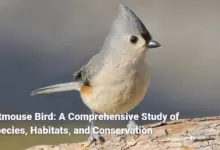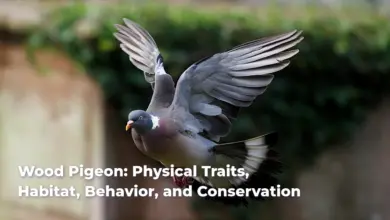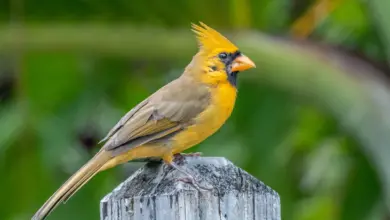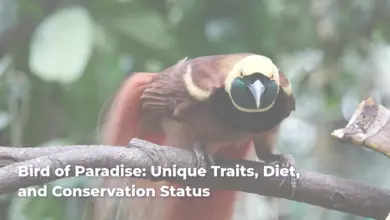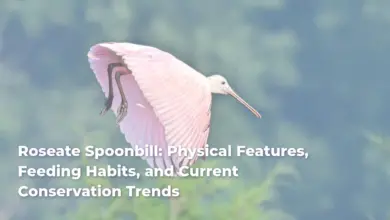Winter Birds: Understanding Migration Patterns, Habitats, and Conservation Efforts
As the chill of winter envelops the landscape, a unique transformation occurs in the avian world. Winter birds, often resilient to frigid weather, bring life and color to the stark scenery. Many species that grace our backyards during these colder months are not only fascinating in their behaviors and adaptations but also play a crucial role in the ecosystems they inhabit. While some birds migrate thousands of miles to escape the frost, others choose to remain in their breeding territories, brave the elements, and utilize the available resources to survive.
From the melodic songs of the Northern Cardinal to the vibrant plumage of the Blue Jay, winter birds tell a compelling story of survival, adaptability, and the intricate relationships they share with their environments. In this article, we’ll explore the common winter birds of North America, their migration patterns, habitats, feeding habits, and the conservation efforts needed to protect these avian wonders.
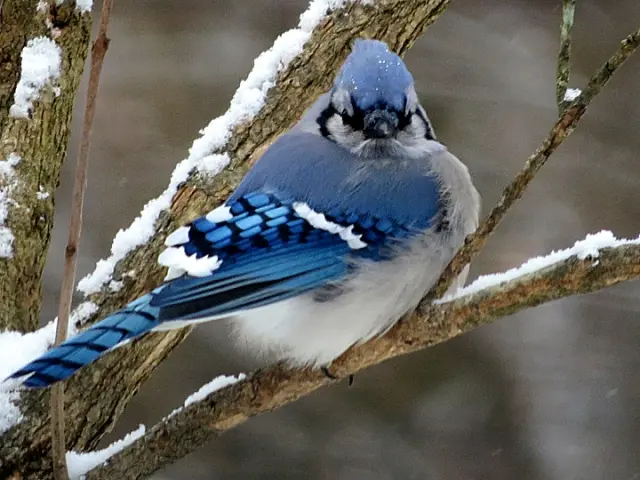
Common Winter Birds in North America
In North America, the winter landscape is home to a diverse array of bird species, each with its unique adaptations and behaviors. From the majestic eagles soaring high above to the small finches flitting through the shrubs, the region becomes a bustling hub of avian activity in the winter months. The most common winter birds include the American Robin, Northern Cardinal, and Blue Jay.
These winter birds exhibit fascinating characteristics that reflect their adaptability to the cold. For instance, the American Robin, often associated with spring, remains present during winter in search of fruit, demonstrating resilience in the face of harsh conditions. Similarly, the Northern Cardinal’s vivid red plumage provides a striking contrast against the white snow, making it a perennial favorite among bird watchers.
The Blue Jay, known for its intelligence and social behaviors, often gathers in flocks to forage for food and communicate through a variety of calls, providing an audible backdrop to the winter landscape. These species not only fill our parks and gardens with life but also serve as critical indicators of ecological health, showcasing the interconnectedness of wildlife and their habitats.
American Robin
Among the common winter birds in North America, the American Robin (Turdus migratorius) stands out not only for its charming appearance but also for its unique winter behavior. While many people associate robins with the arrival of spring, these birds exhibit remarkable adaptation that allows them to thrive even in the coldest months.
- Behavior and Habitat: During winter, American Robins forage in flocks, typically found in rural fields and wooded areas. They predominantly seek out food sources like crabapples and berries from trees and shrubs. While urban environments may see a decline in numbers, robins flourish in habitats where food remains accessible. Their adaptability to different environments showcases their resilience.
- Diet: Robins’ diets shift significantly during winter, moving from insectivorous habits in warmer months to predominantly fruit-based diets. Berries from trees and shrubs become crucial to their survival. Interestingly, if their food sources become scarce, robins can undertake short migrations, sometimes traveling considerable distances in search of sustenance.
- Visual Appearance: With their distinctive red-orange breasts, rounded bodies, and cheerful songs, American Robins are easily recognizable. Males tend to exhibit brighter coloration than females, which makes them stand out against the backdrop of winter’s muted colors.
- Impact of Weather Conditions: The numbers of American Robins present during winter largely depend on food availability and weather patterns. In milder winters, they tend to stay further north, relying on the remaining fruits and seeds, while harsher winters often push them to migrate southward.
- Migration: Although many American Robins migrate for the winter, some will stay in northern areas if conditions allow. Their ability to adapt to changing climates and food availability highlights their resilience and makes them an emblematic species suited for winter in North America.
The American Robin’s remarkable adaptability and varied winter habits not only contribute to the vibrant winter ecosystem but also remind us of nature’s resilience in the face of adversity.
Northern Cardinal
The Northern Cardinal (Cardinalis cardinalis) is another stunning winter bird that captivates the attention of bird watchers and casual observers alike. Known for their brilliant plumage and melodious calls, cardinals are a testament to beauty and resilience in the avian world.
- Visual Appearance: Males are adorned with striking red feathers, which stand out against the snowy landscape. The contrast of their plumage against the white snow creates a visual spectacle that warms even the coldest of days. Females showcase a subtler palette of browns with reddish tints, but both genders exhibit a distinctive black mask around their beaks, adding to their striking appearance.
- Diet: As granivorous birds, Northern Cardinals thrive on a diet primarily comprising seeds, particularly sunflower seeds, which provide the energy needed for winter survival. They also consume fruits and insects when available, showcasing their dietary flexibility. Their foraging behavior often includes searching through the leaf litter or at bird feeders.
- Habitat Preferences: Cardinals are predominantly found in suburban regions, where dense shrubs and backyard feeders offer ample food sources. Their reliance on human-provided food during the cold months emphasizes the importance of backyard bird-feeding efforts in supporting local wildlife.
- Breeding Season: Unlike many other species that migrate or exhibit seasonal variations, Northern Cardinals don’t migrate, making them a year-round resident. Observing their behaviors throughout winter is a rewarding experience, as their songs fill the chilly air, carrying notes of joy and vitality.
- Social Behavior and Flocking: In winter, Northern Cardinals often form loose flocks, which not only aids in locating food but also offers protection from predators. Their social dynamics can be quite fascinating, as they communicate through a series of whistles and chirps, enhancing the communal experience during winter.
The Northern Cardinal’s vibrant presence and charming songs make it a cherished symbol of winter, bringing color and warmth to the colder months.
Blue Jay
The Blue Jay (Cyanocitta cristata) is yet another common winter bird that commands attention with its bold colors and complex behaviors. Recognized for its striking blue plumage and sociable nature, the Blue Jay adds a lively character to the winter landscape.
- Visual Characteristics: Blue Jays are easily recognizable due to their striking blue coloration, accented by white markings and a distinctive crest. Their bold appearance captivates bird watchers and nature lovers looking to spot these birds among the bare branches of winter trees.
- Diet and Foraging Behavior: Blue Jays have a versatile diet that includes nuts, seeds, fruits, and even small invertebrates. They are known to forage in groups, often visiting feeders where they can be assertive and vocal. Their intelligence allows them to quickly adapt to their surroundings, enhancing their foraging success.
- Social Structure: Known for their complex social behavior, Blue Jays have a sophisticated communication system. They use different calls to signal alarm or coordinate movements within their flocks, highlighting their social nature. This behavior is especially beneficial during winter, as it aids in finding food and protecting against predators.
- Habitat Preference: Blue Jays thrive in a variety of wooded habitats, including both urban and rural environments. Their adaptability to human-altered landscapes makes them a common sight around suburbia, where they can easily access feeders and the diverse flora that supports their diet.
- Population Stability: Despite facing challenges, Blue Jay populations have remained relatively stable, in part due to their widespread adaptability. Their vibrant presence during winter adds life to the otherwise stark landscapes, providing a crucial link between ecosystems and communities.
The Blue Jay is a vibrant emblem of winter in North America, and its intelligence, social behavior, and stunning appearance contribute greatly to the rich avian tapestry of the colder months.
Migration Patterns of Winter Birds
Migration is one of the most awe-inspiring phenomena in the avian community, especially for winter birds. The necessity to find warmer climates and abundant food sources drives many bird species to embark on long and challenging migrations each year. Here, we’ll explore the migration patterns of some common winter birds and the factors that influence these journeys.
- Fall Migration: As autumn descends and temperatures drop, many bird species begin their southern migrations in search of milder climates. The timing of this migration varies among species, with some birds departing early in the season while others leave closer to the onset of winter. For instance, the Arctic Tern, renowned for its long migratory journey, can travel over 25,000 miles annually, following a zigzagging route between the Arctic and Antarctic.
- Wintering Habits: Once they reach their winter habitats, birds will often settle in areas that provide ample food resources and shelter. For instance, the American Robin may remain in northern states during mild winters, relying on available fruit and berries instead of migrating southward. Observations have shown that not all individuals of a species will migrate, leading to fluctuations in their populations based on local conditions.
- Spring Migration: As winter subsides and temperatures rise, the urge to return to breeding grounds drives many birds northward once more. The timing of their spring migration can be influenced by environmental cues, such as temperature and daylight variations. The Arctic Tern returns to its breeding grounds in the north during this period, completing its remarkable journey.
- Challenging Conditions: During migration, various factors can influence the success and timing of these journeys. Weather patterns, availability of food, and even habitat destruction can present significant challenges. Avian navigation often relies on visual landmarks, the position of the sun, and the Earth’s magnetic field, highlighting the intricate adaptations migratory birds possess.
- Conservation Concerns: Inevitably, migration patterns are under threat from climate change and habitat degradation. Some species are shifting their migration routes due to changing weather patterns, while others face challenges finding suitable stopover habitats amid urban expansion. Conservation efforts focusing on protecting migratory birds and their habitats are critical to ensuring the survival of these remarkable species.
Migration patterns of winter birds illustrate the incredible resilience and adaptability of avian species. Understanding the complexities of these journeys can help us appreciate the vital role these birds play in our ecosystems, showcasing their importance to human environments and natural landscapes alike.
Arctic Tern Migration
The Arctic Tern (Sterna paradisaea) is often hailed as the champion of migratory birds due to its extraordinary long-distance flights. Each year, these remarkable birds undertake an impressive journey between their breeding grounds in the Arctic and their wintering habitats near Antarctica, covering distances that amaze ornithologists and bird enthusiasts alike.
- Journey Overview: The Arctic Tern migrates an average of 25,000 miles (40,000 kilometers) between its breeding and wintering grounds. However, due to their zigzagging flight patterns, individual birds may travel even farther, with some recordings exceeding 59,650 miles (96,000 kilometers) in a single year. This remarkable journey is often undertaken in search of optimal feeding opportunities in open oceans.
- Fall Migration: In late summer, from late August to early September, Arctic Terns initiate their autumn migration. They leave their northern breeding grounds and scatter into various routes, influenced by individual preferences and environmental conditions. Some studies show birds departing from the Gulf of Maine heading towards the western Atlantic or the coast of Africa, exemplifying the adaptability of this species.
- Wintering Behavior: During winter, Arctic Terns find refuge in the southern oceans, particularly around the Antarctic ice pack. Here, they thrive in nutrient-rich waters where food is plentiful. For an average of 152 days, they feed on fish and other marine creatures, logging even more migratory miles by foraging efficiently within these diverse ecosystems.
- Spring Return: As spring emerges, Arctic Terns begin their northward migration, usually returning to their breeding grounds between April and May. This return flight is often characterized by a faster pace, with terns covering around 472 miles (760 kilometers) daily. Their timing is intricately tied to environmental conditions as they attempt to synchronize with the emergence of food sources upon their return.
- Conservation Perspectives: Despite their incredible ability to navigate and adapt, Arctic Terns face threats such as climate change, which can impact their food availability and breeding success. As their migratory routes and habitats become increasingly affected by rising temperatures, responsible conservation efforts are crucial in protecting this iconic species and ensuring that future generations continue to marvel at their migratory feats.
The migration of the Arctic Tern serves as a powerful reminder of nature’s intricacies and the importance of protecting migratory pathways for these remarkable birds.
Effects of Climate Change on Migration
Climate change has far-reaching implications for the behavior and patterns of migratory birds, significantly altering their migration schedules, routes, and wintering habits. The impacts can be both direct and indirect, as global temperature shifts create challenges for the delicate balance that governs the lives of these winter birds.
- Changes in Timing: Research indicates that many migratory birds are adjusting their migration schedules in response to climate fluctuations. Long-distance migratory birds are arriving at their breeding grounds earlier than they did in previous generations, while shorter-distance migrants often experience delayed migrations. For instance, some species have been observed leaving their breeding grounds earlier in the autumn due to milder conditions, leading to shifts in niche selection and behaviors.
- Shifts in Migration Routes: Alterations in food availability and habitat suitability have driven various species to modify their traditional migration paths. Some birds that would typically head south for warmer climates find it more beneficial to remain in their breeding territories. The recent trends highlight that many migratory birds are relocating their wintering grounds further north, occurring primarily in response to rising winter temperatures.
- Increased Competition: As some migratory birds delay their southern migration, they end up competing with resident birds that do not migrate. In specific cases, such as the Dark-eyed Junco, local bird populations may face increased competition for resources, affecting the local ecosystem. This interaction can disrupt food webs and alter community dynamics, resulting in cascading effects across ecosystems.
- Changing Ecosystems and Habitat Disruption: Climate patterns that affect seasonal cues have raised concerns for the overall relationship between migratory birds and their ecosystems. For instance, extreme weather events can disrupt migratory patterns, leading to altered durations of stay and distances traveled. The increasing frequency and severity of storms, prolonged droughts, and habitat destruction represent serious challenges for migratory birds striving to navigate the complexities of their environments.
- Challenges of Adaptation: Not all avian species are capable of adapting rapidly to the changes brought about by climate change. Some populations are experiencing significant declines, particularly those unable to cope with shifting environmental conditions. To support vulnerable species and sustain their populations during these transformative periods, conservation and management efforts must consider these evolving migration patterns.
Effects of climate change on winter bird migration emphasize the intricate relationship between climate health and avian populations. Understanding these dynamics is essential in informing conservation efforts aimed at protecting these incredible species and ensuring their survival in the face of ongoing climate challenges.
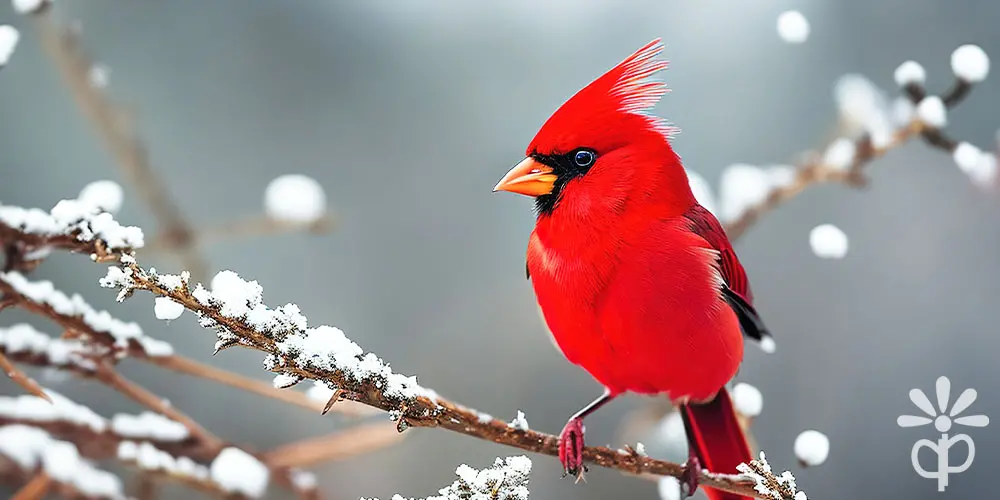
Wintering Grounds
Wintering grounds serve as critical habitats that provide birds with the necessary resources for survival during the harsher months. These areas are not only essential for migratory species that travel long distances but also for those birds that opt to remain in their breeding territories. Understanding the significance of wintering grounds reveals how these environments support avian populations and contribute to ecosystem health.
- Essential Resources: Wintering grounds offer birds access to food, shelter, and breeding sites. Many species gravitate toward regions that maintain fruit-bearing plants, open water, and diverse vegetation, which provide the resources needed to endure winter’s demands. For instance, areas rich in berries, such as holly and juniper, are vital for species like the American Robin and Northern Cardinal.
- Ecological Importance: Beyond providing food and shelter, wintering grounds help support various ecological interactions. Birds contribute to pest control, seed dispersal, and pollination, all of which enhance the health and functionality of these habitats. Their presence also indicates the overall health of ecosystems, acting as bioindicators for environmental changes.
- Impact of Climate Change: As climate change alters environmental conditions, the availability and suitability of wintering grounds can be significantly affected. Rising temperatures may cause the timing of food availability to shift, thus disrupting the relationships between migratory birds and their habitats. Some species may struggle to locate adequate resources if their traditional wintering grounds undergo drastic ecological changes, leading to potential population declines.
- Conservation Strategies: Protecting and restoring wintering habitats is crucial for sustaining avian populations. Conservation programs often focus on maintaining and enhancing these areas to support the needs of winter birds. This can include habitat restoration initiatives, land acquisition for preservation, and supporting sustainable land-use practices that acknowledge the value of these landscapes.
- Community Engagement: Local communities can play a significant role in protecting wintering grounds. Encouraging landowners to create bird-friendly habitats, engaging in conservation efforts, and supporting organizations dedicated to avian protection can further enhance the resilience of winter bird populations.
Wintering grounds are vital habitats for both migratory and non-migratory species, serving as sanctuaries that provide essential resources. Understanding the dynamics at play in these areas can guide conservation efforts aimed at safeguarding the future of winter birds and the rich biodiversity they represent.
Habitats of Winter Birds
The habitats that winter birds occupy throughout North America are diverse and reflect the varying ecological needs of these avian species. In urban areas and rural settings alike, birds adapt to their surroundings, utilizing available resources necessary for survival during colder months. Understanding these habitats reveals the importance of maintaining healthy environments for wintering birds.
- Urban Environments: Urban areas often provide unique habitat conditions for winter birds, offering varying resource availability compared to rural settings. Urban habitats tend to be warmer, creating what is known as an “urban heat island” effect, which can attract certain bird species. The presence of bird feeders and supplementary food resources, including scattered seeds from parks and gardens, makes urban areas increasingly attractive to some avian populations.
- Rural Landscapes: In contrast, rural habitats generally offer a wider array of native vegetation and natural food sources. Species that rely on seeds from wild plants and woodland insects often thrive in these settings. Rural areas support diverse habitats such as grasslands, open fields, and forests, providing essential breeding and foraging opportunities for many winter bird populations.
- Wetlands: Wetlands play a crucial role as habitats for winter birds, serving as vital stopovers for various migratory species. These areas not only provide food resources, including aquatic plants and invertebrates but also offer shelter during harsh weather. Many migratory birds utilize wetlands for both resting and feeding during their journeys.
- Forested Areas: Forested landscapes, particularly evergreen forests, are essential habitats that support numerous winter birds. These areas provide cover from predators and harsh elements, allowing species like the Black-capped Chickadee and Downy Woodpecker to forage for food effectively. The dense canopy and diverse understory in forests contribute to the richness of avian communities during winter.
- Conservation Needs: As urbanization and habitat degradation continue to threaten winter bird populations, understanding the significance of these diverse habitats is essential for conservation efforts. Supporting initiatives that protect natural landscapes, promote sustainable agriculture, and enhance urban green spaces can help ensure that winter birds have access to the necessary resources they require for survival.
The varied habitats that winter birds inhabit highlight the intricate relationships they share with their ecosystems. Ensuring the health and diversity of these environments is essential for supporting the resilience and adaptability of winter bird populations.
Urban vs. Rural Habitats
The differences in habitats between urban and rural environments can significantly affect the composition and behavior of winter bird populations. Urban areas, bustling with human activity and structures, offer unique challenges and opportunities for wildlife, while rural areas tend to prioritize natural vegetation and ecosystems. By exploring the variances between these habitats, we can better understand their impact on wintering bird populations.
- Resource Availability: Urban habitats often include bird feeders, gardens, and parks, providing supplementary food sources that can sustain various bird species during winter months. In contrast, rural areas typically offer more natural food sources, such as seeds from wild plants, fruits, and invertebrates. This difference in resource availability influences the types of species that thrive in each environment.
- Temperature Variations: Urban environments tend to experience warmer temperatures compared to their rural counterparts due to the urban heat island effect. This phenomenon can attract more wintering birds to urban areas, creating a favorable microclimate during cold months. However, the warmer temperatures also lead to alterations in vegetation and wildlife interactions, sometimes resulting in invasive species outcompeting native ones.
- Species Composition: Studies indicate that certain bird species prefer urban habitats, while others thrive in rural settings. For example, some species, like pigeons and sparrows, may be more prevalent in urban areas due to their foraging adaptations and ability to occupy human-altered landscapes. Conversely, species requiring mature forests or expansive grasslands are often found in rural habitats that support their ecological needs.
- Human Interaction: Urban birds are often subject to increased human interactions, which can create both challenges and advantages. While the presence of feeders and supplementary food sources can benefit wintering birds, human-related hazards such as window collisions, predation by domestic cats, and habitat destruction pose significant threats to their survival.
- Conservation Considerations: The contrasting conditions in urban versus rural habitats highlight the necessity for tailored conservation strategies. In urban settings, initiatives can focus on educating residents about creating bird-friendly environments and providing supplemental resources. In rural areas, efforts may include habitat restoration and protection of natural ecosystems to promote healthy avian populations.
Understanding the differences between urban and rural habitats elucidates how environmental factors shape winter bird communities. Supporting conservation efforts that consider these unique habitats is vital for ensuring the survival of wintering birds amidst ongoing changes in land use and climate.
Wetlands and Their Importance
Wetlands are among the most productive ecosystems on the planet, providing essential habitats for countless species, including winter birds. These unique areas are characterized by their water-saturated conditions, supporting various plant and animal life that thrives in aquatic environments. The significance of wetlands in relation to wintering birds cannot be overstated:
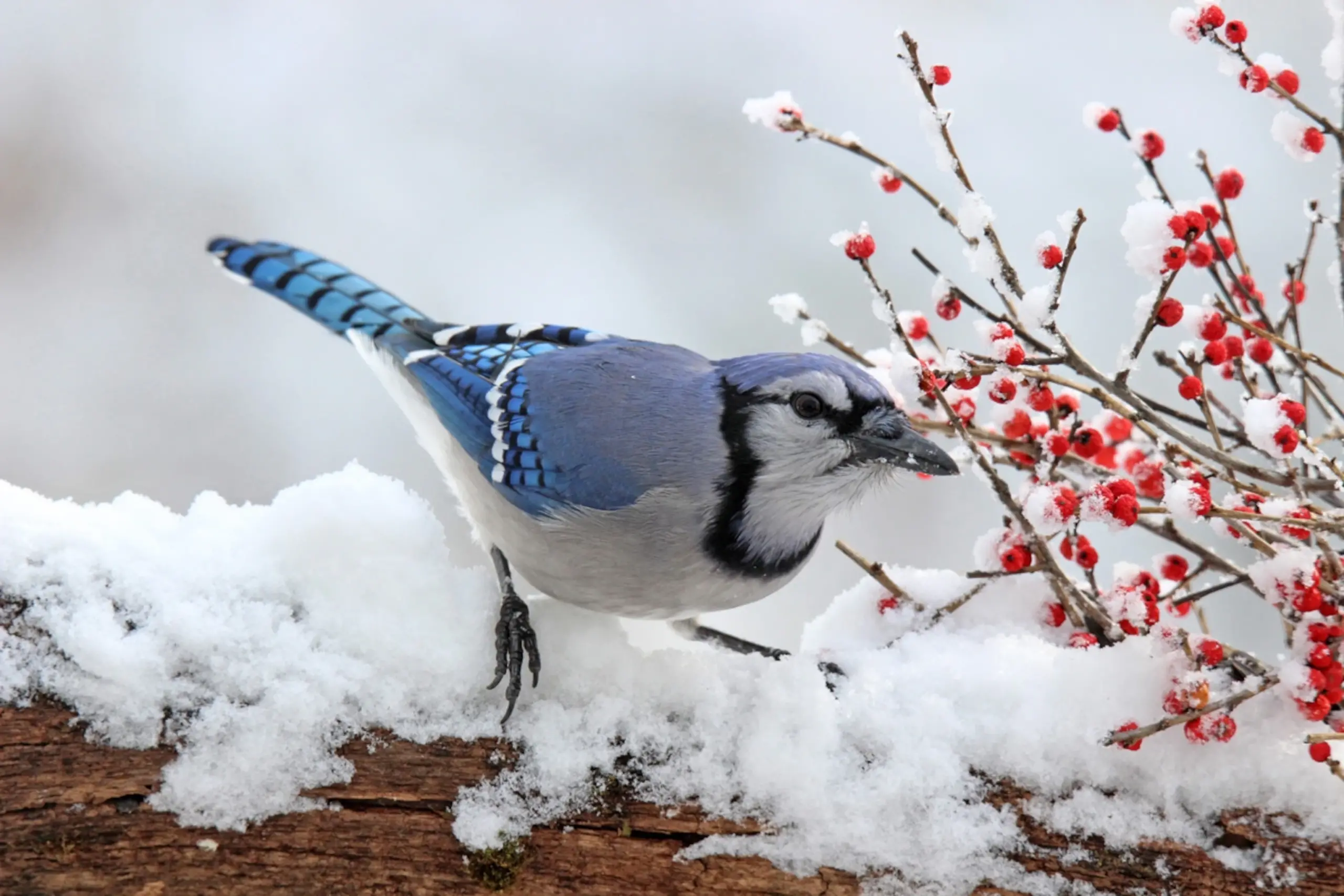
- Food Resources: Wetlands serve as critical feeding grounds for many migratory and resident birds during winter. They provide a diverse array of resources, including seeds, invertebrates, and aquatic vegetation. For instance, waterfowl such as ducks and geese rely on wetlands for sustenance during their migrations. As plants die back in other ecosystems, wetlands remain lush with resources that support winter bird populations.
- Shelter and Breeding: Wetlands offer shelter from the elements and predators, making them vital stopover sites for migratory species. Many birds use wetland areas to rest and refuel during long flights. Moreover, some birds, such as certain species of herons and rails, rely on wetlands for breeding and nesting, demonstrating their ecological importance throughout various life stages.
- Ecosystem Health: Wetlands play a critical role in maintaining environmental health by filtering pollutants, regulating water levels, and providing habitat for numerous organisms. By sustaining diverse wildlife, wetlands contribute to overall ecological stability and integrity. Healthy wetlands help ensure that winter bird populations can thrive while supporting broader biodiversity.
- Challenges Faced: Wetlands are vulnerable to a range of threats, including drainage, pollution, and climate change. These factors can disrupt the delicate balance of wetland ecosystems, leading to declines in bird populations that depend on these habitats. Conservation efforts targeting wetland protection and restoration are essential for securing the future of wintering bird species.
- Conservation Initiatives: Recognizing the importance of wetlands for winter birds, various organizations and government agencies are actively working toward their preservation. Efforts include restoring degraded wetlands, creating new protected areas, and engaging local communities in conservation initiatives. By raising awareness about the ecological significance of wetlands, stakeholders can foster a sense of shared stewardship for these critical habitats.
Wetlands exemplify the intricate connections between ecology and avian populations, providing essential resources for winter birds as they navigate the challenges of the colder months. Protecting and restoring these habitats is essential for maintaining healthy ecosystems and supporting the avian diversity that enriches our landscapes.
Forested Areas in Winter
Forested areas play a crucial role in providing winter habitats for numerous bird species in North America. As the trees lose their leaves and the snow blankets the ground, these ecosystems become vital refuges for birds seeking shelter, food, and nesting opportunities. In examining the importance of forested areas, several aspects stand out:
- Shelter and Protection: Forests offer essential cover from harsh weather and predators, allowing birds to find safety amidst the dense vegetation. Evergreen trees, in particular, provide year-round shelter, with their needles offering a barrier against cold winds and snow. Species like the Black-capped Chickadee and Downy Woodpecker thrive in these environments, utilizing the forest’s canopy and understory for forage and protection.
- Food Sources: Throughout winter, birds adapt their feeding habits to utilize the available resources within forested areas. Many species rely on seeds, berries, and insects found among the trees. For example, Pine Siskins often forage on the seeds of coniferous trees, while Woodpeckers seek insects under the bark of trees, revealing their resourcefulness in accessing food during the cold months.
- Biodiversity Hotspots: Forested areas harbor diverse plant and animal life, providing rich ecological niches for winter birds. The variety of tree species, understory plants, and ecological layers create complex habitats that support different avian communities. In turn, this biodiversity contributes to the resilience of the ecosystem, allowing various bird species to coexist and adapt to changing conditions.
- Impact of Climate Change: As climate change continues to unfold, forested habitats face challenges that can impact winter bird populations. Rising temperatures and altered precipitation patterns may lead to shifts in tree species composition and distribution, ultimately affecting the food sources and shelter that birds rely on. Understanding these dynamics is vital for developing effective conservation strategies.
- Conservation Strategies: Protecting and sustainably managing forested habitats is crucial for ensuring the survival of winter birds. Efforts that focus on preserving mature forests, restoring degraded areas, and promoting sustainable forestry practices can enhance the quality of these environments for avian populations. Engaging local communities in conservation initiatives also fosters stewardship and awareness of the importance of healthy forest ecosystems.
Forested areas provide essential winter habitats for birds, embodying the complex interrelationships between species and their environments. Prioritizing the conservation and enhancement of these crucial habitats will help sustain healthy winter bird populations and preserve the biodiversity they represent.
Feeding Habits of Winter Birds
Understanding the feeding habits of winter birds provides insight into their adaptability and the ecological roles they play in their environments. As resources become scarce during the colder months, birds exhibit various dietary shifts to ensure survival. Here, we’ll explore the feeding habits and strategies of winter birds.
- Dietary Shifts: Many nonmigratory songbirds shift from an insectivorous diet in warmer months to primarily feeding on seeds and fruits during winter. This change is crucial for their survival as colder temperatures and snow cover present challenges for natural foraging. Birds must adapt their diets to include high-calorie foods, allowing them to maintain body temperature and energy levels.
- Caloric Needs: As temperatures drop, it becomes increasingly essential for birds to consume more calories. High-energy foods that provide fat and protein are vital for their winter survival. Common food sources include black-oil sunflower seeds, peanuts, and suet, which provide an excellent energy boost.
- Types of Food to Offer:
- Seeds: Black-oil sunflower seeds are a favorite due to their nutritional profile and easy-to-crack shells. Other varieties such as safflower, cracked corn, and nyjer seeds attract various birds, from sparrows to jays.
- Fruits: Birds enjoy fresh fruits such as apples and oranges during winter; these can be cut into small pieces to facilitate feeding and increase accessibility.
- Suet and Mealworms: Offering suet is an excellent way to provide essential fats for birds, particularly during cold weather when natural food sources are limited. Mealworms are an appealing option for insect-eating birds that remain in winter.
- Feeding Behaviors: Many birds will join flocks to locate food more effectively during winter. This social behavior aids in finding sustenance while providing safety in numbers. Some species, like the Eastern Bluebird, will cache food storing it for later consumption ensuring they have reserves during tough times.
- Positioning Feeders: To attract more birds, it’s vital to position feeders in safe locations amid trees and shrubs. Clean feeders regularly and maintain a consistent supply of fresh food to provide reliable resources for visiting birds.
Understanding the feeding habits of winter birds is essential for supporting their survival during the colder months. By providing adequate food sources and maintaining feeder cleanliness, bird enthusiasts can enhance their interactions with these fascinating avian visitors.
Seed-Eating Birds
Seed-eating birds represent a significant portion of winter avian populations, showcasing remarkable adaptations in their feeding habits to ensure survival in colder temperatures. These birds, often characterized by their strong, conical beaks, are well-equipped to crack seeds and extract the nutrition they need to endure seasonal challenges. Here, we’ll delve into the feeding behaviors and dietary preferences of common seed-eating birds during winter.
- Dietary Preferences: Seed-eating birds predominantly rely on seeds and grains during the winter months. Their diet includes a variety of seeds found in grasses, sunflowers, and other plants. Species like finches and sparrows actively search for seeds on the ground or in bird feeders, exploiting available food sources to meet their energy requirements.
- Competitive Feeding Behavior: During winter, competition for food can become pronounced as many birds congregate around readily available resources. Flocks of goldfinches and house sparrows may gather at feeders, where they take turns feeding or aggressively defend their chosen spots. Understanding their social dynamics during these feeding frenzies can provide deeper insight into their behaviors.
- Adaptive Strategies: To navigate the challenges of winter, seed-eating birds employ various strategies. Some species, like Chickadees, are known to cache seeds, storing them in safe places to retrieve later. This behavior highlights their intelligence and resourcefulness in securing food in times of scarcity.
- Food Sources: Bird feeders provide a vital resource for seed-eating birds during the winter months. Common foods that attract these species include:
- Black-oil sunflower seeds: A favorite among many birds, known for high oil content.
- Safflower seeds: Particularly attractive to cardinals and less accessible to squirrels.
- Nyjer seeds: Highly favored by finches, providing essential fats needed during winter.
- Understanding Seed Preference: Recognizing the preferences of different seed-eaters can enhance backyard bird-watching experiences. By offering a variety of seeds specific to the species in your area, birdwatchers can attract diverse avian visitors to their feeders, contributing to the ecological balance in their surroundings.
Seed-eating birds represent an important aspect of winter bird populations, demonstrating adaptability and resilience in their feeding habits. Providing quality food sources during the colder months supports these avian residents and fosters a thriving environment for winter bird watching.
Insectivorous Birds in Winter
Insectivorous birds, often renowned for their diets rich in insects during warmer months, face unique challenges during winter when these food sources become scarce. While many insect-eating species migrate to find abundant food, some remain active in colder climates and adapt their feeding habits accordingly. Here’s a detailed overview of their dietary adaptations and behaviors during winter.
- Dietary Adjustments: To cope with the scarcity of insects, some insectivorous birds shift their diets to include other food sources. They may turn to fruits, seeds, and even suet offered in backyard feeders. For example, woodpeckers and chickadees can often be seen pecking at bark to find hidden insects or scavenging for leftover berries.
- Reliance on Suet: Suet is an especially valuable food source for many insectivorous birds during winter. This high-calorie fat provides the essential energy needed to maintain body heat in frigid temperatures. Woodpeckers, nuthatches, and some wrens are particularly attracted to suet feeders, as they provide a concentrated energy source when insects are not readily available.
- Foraging Behavior: Birds like the Downy Woodpecker and Tufted Titmouse adapt their foraging strategies in winter. They search for dormant insects hiding under tree bark or in crevices, continuously honing their skills to locate hidden food sources.
- Feeding Sites: Many insectivorous birds can be found around areas with good tree cover, where they can both forage for food and find shelter from cold winds. Wooded areas, parks, and gardens with diverse plant species support these birds by providing essential resources throughout winter.
- Conservation Efforts: As the availability of insects declines due to climate change and habitat degradation, supporting wintering insectivorous birds is vital. Providing reliable food sources through feeders, conserving natural habitats, and promoting practices that foster healthy ecosystems can help enhance the survival of these species during the winter months.
Despite the challenges they face, insectivorous birds exhibit remarkable adaptability and resilience in winter. By understanding their feeding behaviors, we can create environments that support their survival and sustainability in the face of changing climate dynamics.
Suet and Feeders for Winter Birds
During winter, providing proper food sources is crucial for supporting avian populations, particularly for insectivorous and seed-eating birds. Suet feeders present an effective way to offer high-calorie food that meets the energy demands of birds struggling against the elements. Here’s a comprehensive look at the advantages of using suet and tips for the effective placement of bird feeders.
- What is Suet?: Suet is a solid form of animal fat, often rendered from beef or pork, and is an excellent calorie source for birds. Offered in cake form, suet provides the necessary fats that help birds maintain their body heat during cold weather. It can also be blended with seeds, nuts, and fruits to create a more appealing and nutritious option for backyard birds.
- Attracting Bird Species: Numerous birds are attracted to suet, including woodpeckers, chickadees, nuthatches, and wrens. By providing suet in backyard feeders, birdwatchers can enjoy observing these species as they visit and feed.
- Feeder Design: Effective feeder designs for suet include:
- Cage-style feeders: Allow birds to cling to the sides while they peck at the suet cake, preventing larger birds and squirrels from accessing the food.
- Platform feeders: Offer a flat surface where multiple birds can feed at once, suitable for both suet and seed varieties.
- Homemade options: Attaching suet to logs or tree branches serves as a natural feeding station, catering to birds that prefer forage in natural conditions.
- Winter Feeding Tips:
- Timing: Begin offering suet in early fall and continue into early spring to support resident and migratory birds during their demanding months.
- Maintaining Feeders: Regularly clean feeders to prevent mold and spoilage of the suet. Monitoring for freshness and replacing it frequently is crucial for the health of visiting birds.
- Additional Foods: Beyond suet, offering complementary foods can attract a variety of birds. High-calorie options such as nuts, seeds, and dried fruits can enhance the dietary offerings available in your environment, making your backyard a hotspot for wintering birds.
By providing suet and maintaining clean, well-placed feeders, backyard habitats can serve as vital support systems for winter birds. This contribution not only enhances local biodiversity but also provides a rewarding birdwatching experience during the colder months.
Birdwatching Tips in Winter
Winter birdwatching offers a unique opportunity to observe avian species that thrive despite the cold. With the right strategies and knowledge, enthusiasts can enhance their birdwatching experiences and appreciate the beauty of winter birds amidst their natural habitats. Here are some helpful tips for successful winter birdwatching:
- Dress in Layers: Winter temperatures can vary significantly, so dressing in layers is essential. Start with moisture-wicking base layers to keep dry, add an insulating mid-layer for warmth, and finish with a waterproof outer layer to shield against the elements. Don comfortable footwear, insulated gloves, and a warm hat to maintain comfort during long outings.
- Best Time to Watch: Early mornings and late afternoons are typically the prime times for bird activity. During these periods, birds are more likely to forage for food and interact socially, providing ample opportunities for observation.
- Choose Quality Optical Equipment: Binoculars with 8x to 10x magnification are ideal for birdwatching. Ensure that your gear is waterproof and fog-proof, allowing for reliable use in colder conditions. A spotting scope can also enhance your ability to view birds at greater distances.
- Stay Patient and Quiet: Observing birds often requires patience. Remain still and quiet, as sudden movements or noises can scare them off. If you wait calmly, birds may come into view, allowing you to observe their behaviors and interactions.
- Locate Food Sources: Many birds gather near food sources, so being aware of feeding patterns can help you find them. Knowing the seasonal migration patterns can also yield insight into where specific species are likely to be found during winter.
Best Locations to Observe Winter Birds
The right location can significantly impact your winter birdwatching experience. Certain regions across North America provide ideal habitats teeming with diverse bird species, enhancing your chances of encountering various winter avians. Here are some recommended locations:
- Everglades National Park, Florida: This unique park offers a multitude of habitats, attracting a variety of birds during winter months. Notable species include Wood Storks and Roseate Spoonbills. Key birding spots include the Anhinga Trail and Mrazek Pond.
- Bosque del Apache National Wildlife Refuge, New Mexico: Known for its thriving populations of Sandhill Cranes and Snow Geese, this refuge provides excellent viewing opportunities with designated observation decks for birdwatchers to enjoy the spectacle.
- Merritt Island National Wildlife Refuge, Florida: Over 300 species of birds can be observed in this diverse habitat, making it a hotspot for avian enthusiasts. The Black Point Wildlife Drive offers a prime location for viewing migratory birds.
- Corkscrew Swamp Sanctuary, Florida: This sanctuary features old-growth cypress forests and a boardwalk providing easy access to view various winter birds in a serene setting.
- Niagara Birding Trail, New York: Renowned for its diverse waterfowl species, the Niagara River Corridor is a prime location for observing migratory birds, particularly during peak migration seasons.
By exploring these locations and utilizing strategic birdwatching techniques, enthusiasts can enhance their winter experiences while appreciating the beauty and diversity of avian life during the colder months.
Essential Gear for Winter Birdwatching
Having the right gear significantly impacts your winter birdwatching experience, allowing you to stay comfortable and focused on observing the birds. Here’s an essential guide to the gear you’ll need for effective winter birdwatching:
- Clothing Layers: Protecting yourself from the elements starts with proper clothing.
- Base Layer: Use moisture-wicking thermal clothing, such as long-sleeved shirts made from merino wool or synthetic fabrics.
- Mid Layer: Add an insulating layer, such as fleece or wool, to keep warm.
- Outer Layer: A waterproof and windproof jacket and pants will shield against cold winds and precipitation. Don insulated gloves and a warm hat as well.
- Footwear: Invest in waterproof and insulated boots to keep your feet warm and dry. Proper socks made from merino wool or other moisture-wicking materials will enhance comfort during long outings.
- Optical Equipment: A good pair of binoculars is indispensable. Choose models that are waterproof and fog-proof for reliability in varying weather conditions. An 8x to 10x magnification range is suitable for observing birds at appropriate distances.
- Accessories:
- Field Guide: Carry a bird identification guide specific to your region to help you quickly identify species.
- Thermos: Bringing a thermos filled with a hot beverage is a great way to stay warm during your excursion.
- Camera: If capturing images is a priority, consider a waterproof camera for quick snapshots without worrying about moisture damage.
- Timing and Conditions:
- Best Times for Birdwatching: Early mornings and clear days are typically ideal for seeing birds when they are most active. Consider favorable weather conditions for outdoor excursions.
- Bird Behavior: Winter birds may exhibit different behaviors, such as flocking together for warmth. Observing them near known food sources can yield rewarding encounters.
By preparing adequately with the appropriate gear and timing, you can enhance your winter birdwatching experience and enjoy observing the remarkable adaptations and behaviors that winter birds exhibit.
Conservation Efforts for Winter Birds
Recognizing the importance of conserving winter birds is more critical than ever, given their vulnerability to various threats. Understanding these challenges and supporting ongoing conservation efforts can foster healthier ecosystems and sustainable bird populations throughout North America. Here are key aspects of conservation efforts focusing on winter birds:
- Monitoring and Research: Ongoing research and monitoring programs are essential for understanding bird populations and their habitats. Organizations like the American Bird Conservancy utilize advanced techniques to track migratory patterns and identify species in need of immediate conservation actions. This data is crucial for informing targeted initiatives.
- Habitat Restoration and Protection: Protecting and restoring essential habitats can significantly improve the chances of winter bird survival. Various conservation initiatives aim to enhance and protect vital ecosystems, including wetlands and forested areas. Successful projects can restore native plants, create new protected areas, and support cross-organizational collaborations to protect winter habitats.
- Enhancing Food Sources: Supporting winter birds can involve planting native trees and shrubs that provide food resources during the colder months. Educating communities about the importance of bird-friendly practices, such as maintaining feeders and minimizing pesticide use, can also create supportive environments for winter birds.
- Public Education and Engagement: Engaging the community through education efforts about the importance of winter birds and their conservation needs strengthens the impact of outreach initiatives. These programs raise awareness about local species, their challenges, and how individuals can contribute to conservation efforts.
- Challenges Faced: Declines in winter bird populations can stem from various threats, including habitat loss, climate change, and human-related factors. Urban development, pollution, and predation by domesticated animals all pose significant challenges to winter birds.
Threats to Winter Bird Populations
Understanding the key threats facing winter bird populations is crucial for developing effective conservation strategies. Here are some significant factors contributing to the vulnerability of these species:
- Habitat Loss and Degradation: One of the greatest threats to winter birds is the loss and fragmentation of habitats caused by urban development, agriculture, and climate change. These activities reduce the availability of essential food sources and nesting sites, leading to declines in local and migratory populations.
- Climate Change: Rising temperatures and erratic weather patterns affect the availability of food resources. Changes in seasonal cues can disrupt migration timing, impacting breeding success and food availability for winter birds.
- Human Activity: The impact of outdoor cats on bird populations cannot be overstated, as they kill billions of birds annually. Additionally, collisions with windows and wind turbines pose significant threats to winter bird survival.
- Predation and Competition: Invasive species often exacerbate declines among native bird populations by outcompeting them for resources or directly preying on them. This is particularly evident on islands where native birds are not evolutionarily adapted to handle such pressures.
- Pesticides and Chemicals: The use of pesticides in agriculture leads to a reduction in available insects, directly impacting insectivorous bird populations. Organisms in the food web can be affected, leading to a cascading impact on winter bird species relying on specific food sources.
Through collective efforts and focused conservation strategies, various organizations are working to mitigate these threats and enhance winter bird populations across North America. Working towards habitat restoration, securing critical migratory routes, and reducing human impact are essential steps in supporting the survival of winter birds.
Role of Bird Sanctuaries
Bird sanctuaries serve a vital function in the conservation of winter birds by providing secure habitats where these avian species can thrive during the colder months. These areas often protect critical habitats along migratory routes, offering essential resources such as food, shelter, and safe breeding grounds. Here are some important aspects regarding the role of sanctuaries in preserving winter birds:
- Habitat Protection: Sanctuaries serve to preserve vital winter habitats for migratory and resident birds. As development encroaches upon natural landscapes, these protected areas became sanctuaries where birds can find safe refuge, food resources, and breeding opportunities.
- Monitoring and Research: Many sanctuaries engage in monitoring birthing populations during winter. By tracking changes in bird numbers and behaviors, conservationists can gather valuable data to inform future strategies aimed at protecting vulnerable species. Research conducted in these areas also contributes to our understanding of migration patterns and habitat needs.
- Public Education and Engagement: Sanctuaries provide educational programs aimed at increasing public awareness about the importance of winter birds and the challenges they face. Workshops, guided tours, and volunteer opportunities help foster a community of conservationists who champion the preservation of local wildlife.
- Feeding and Habitat Enhancement Programs: Sanctuaries may implement feeding programs to provide supplemental food during harsh winters, while also enhancing habitats through planting native vegetation and managing water sources, thus creating more supportive environments for winter birds.
How to Help Winter Birds
Individuals can play a significant role in supporting winter birds through several actions that promote conservation and enhance local habitats. Here are some steps you can take to contribute to the well-being of these avian populations:
- Create Bird-Friendly Spaces: Enhance your backyard by planting native flora that provides food and shelter for winter birds. This can include berry-producing shrubs, trees, and flowers that have seeds and fruits during colder months.
- Advocate for Conservation: Supporting policies that protect wildlife habitats and promote sustainable land use is essential. Advocacy can be directed towards local, state, and federal initiatives aimed at habitat protection and enhancement.
- Volunteer with Conservation Organizations: Engaging with local bird sanctuaries and conservation groups can make a direct impact on ongoing conservation efforts. Volunteering may include habitat restoration projects, bird monitoring, and educational outreach programs.
- Participate in Citizen Science: Joining citizen science initiatives can contribute valuable data to conservation efforts. Many organizations rely on volunteers to assist in monitoring bird populations, facilitating count surveys, and data collection during migration and wintering periods.
- Provide Food Sources: Offering feeders with quality birdseed or suet during the winter months can help sustain winter birds. Keeping feeders clean and well-stocked will attract more birds and support their nutritional needs.
By participating in these activities, individuals can actively contribute to conserving winter birds. These efforts collectively foster healthier habitats, enhance biodiversity, and promote a deeper appreciation for our avian neighbors.
In conclusion, winter birds embody the remarkable adaptability and resilience of avian life amid the challenges of cold weather. Understanding the behaviors, habitats, and conservation needs of these species underscores their crucial role in our ecosystems. By recognizing the importance of winter birds and supporting ongoing conservation efforts, we can ensure that these vibrant creatures continue to grace our lives with their beauty and songs throughout the colder months and beyond.




